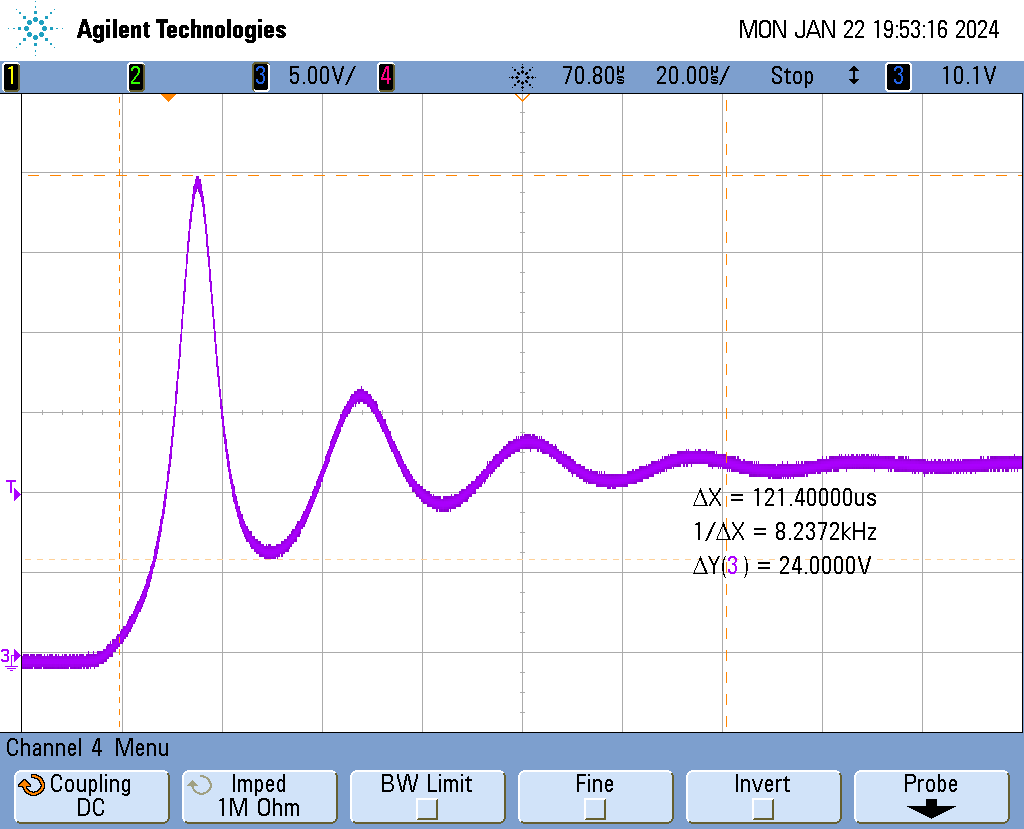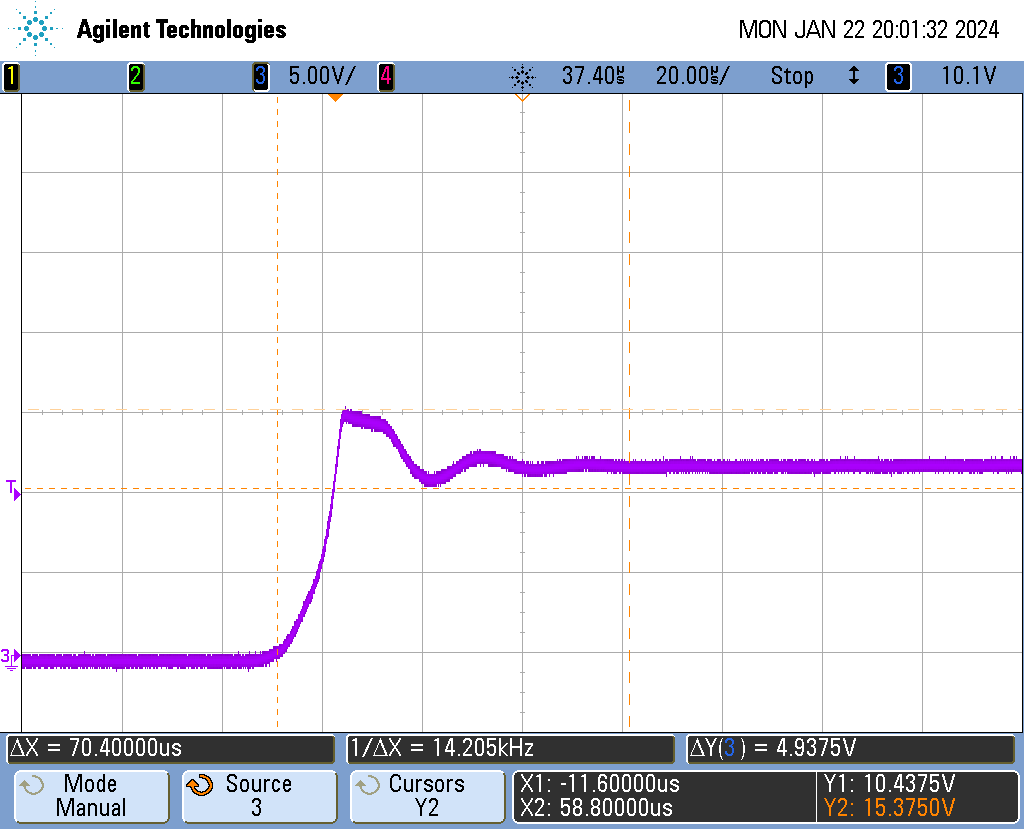Hello,
I have a design using the TPS2121 which I am using to seamlessly switch between two 12V inputs. The inputs are provided by 12V/3A output AC/DC power adapters. When one of the 12V adapters is connected to the MUX on either input I see a 12V output as expected. However, when I connect the second 12V adapter to the other input the 12V output drops, causing my board to reset as the downstream DC/DC regulators brown out.
The power adapters are identical and output ~12.2V in to an open circuit.
I have attached the schematic I am using here. Both 12V inputs have a TVS diode and a CM Choke (for EMI purposes) on the input path to the TPS2121. I believe I have the TPS2121 set up for XCOMP mode as per table 9-3 in the datasheet.
I have also attached a scope plot of the TPS2121 output when the second input is connected.
There is ~400mA load on the TPS2121 output when the second power input is connected and the output drops low as shown in the scope plot.

I would appreciate it if you could review the information here and give me any feedback as to why I might be seeing the TPS2121 output behave as I do.
Thanks and regards,
Paul





